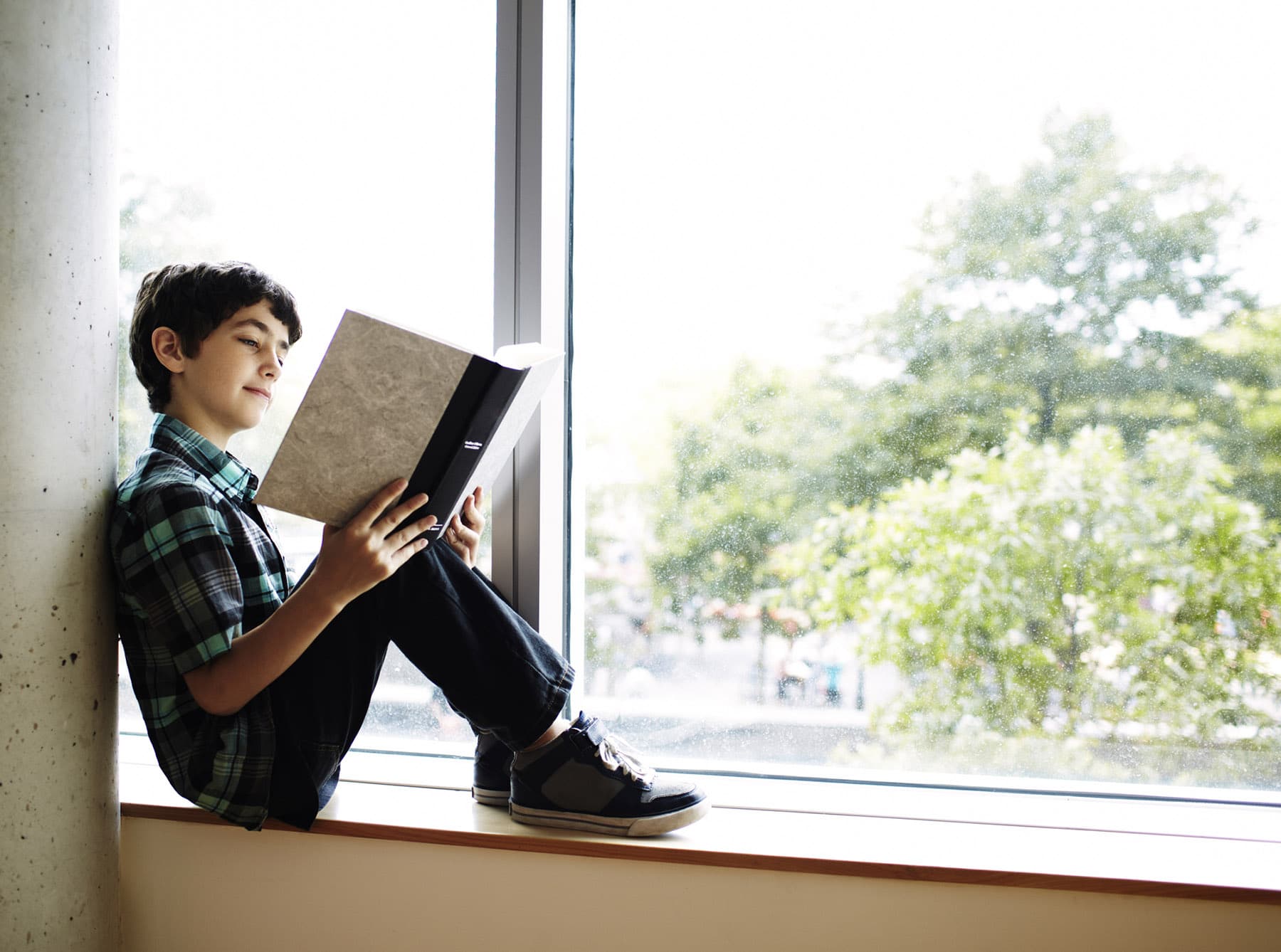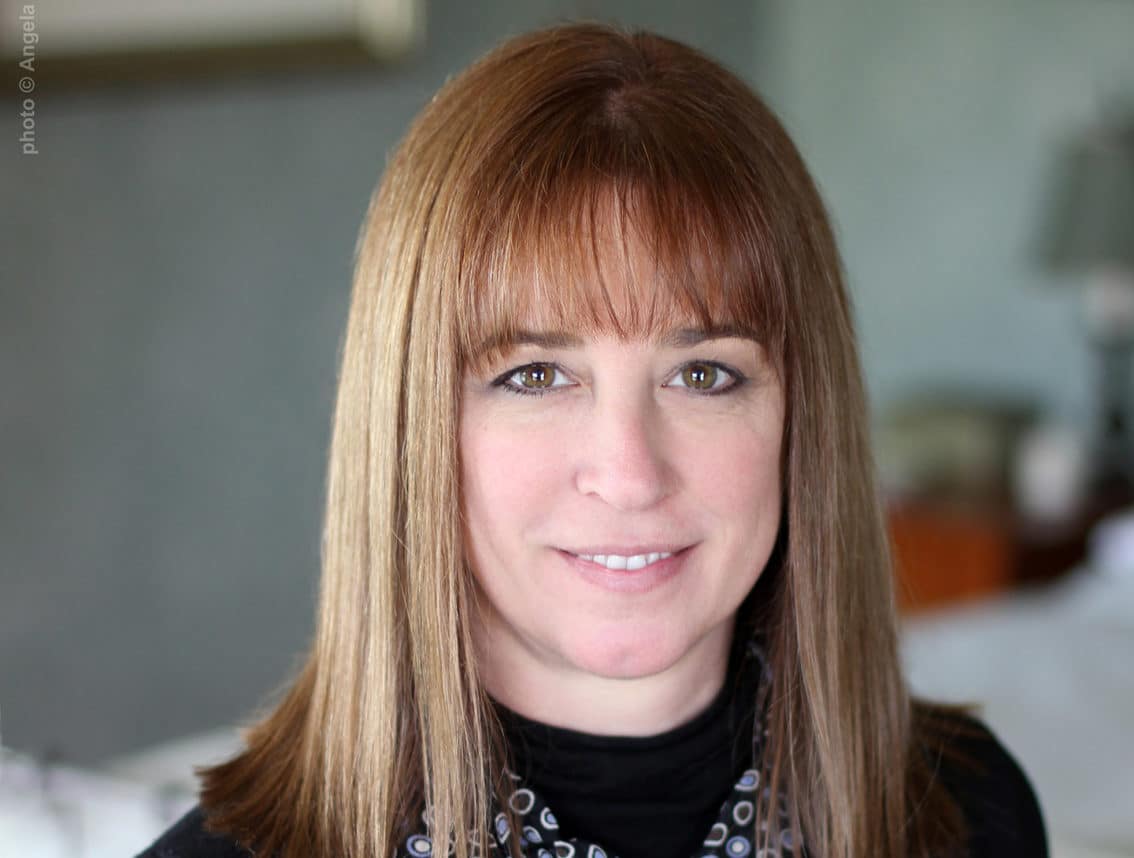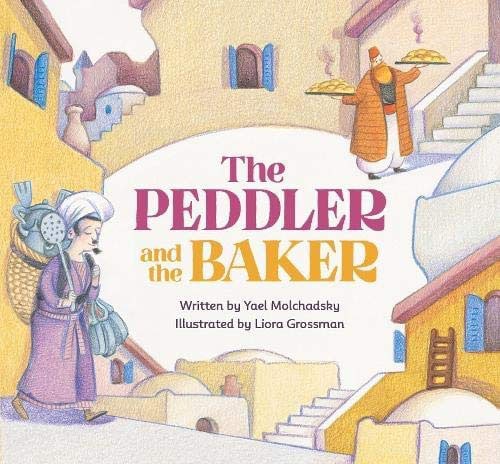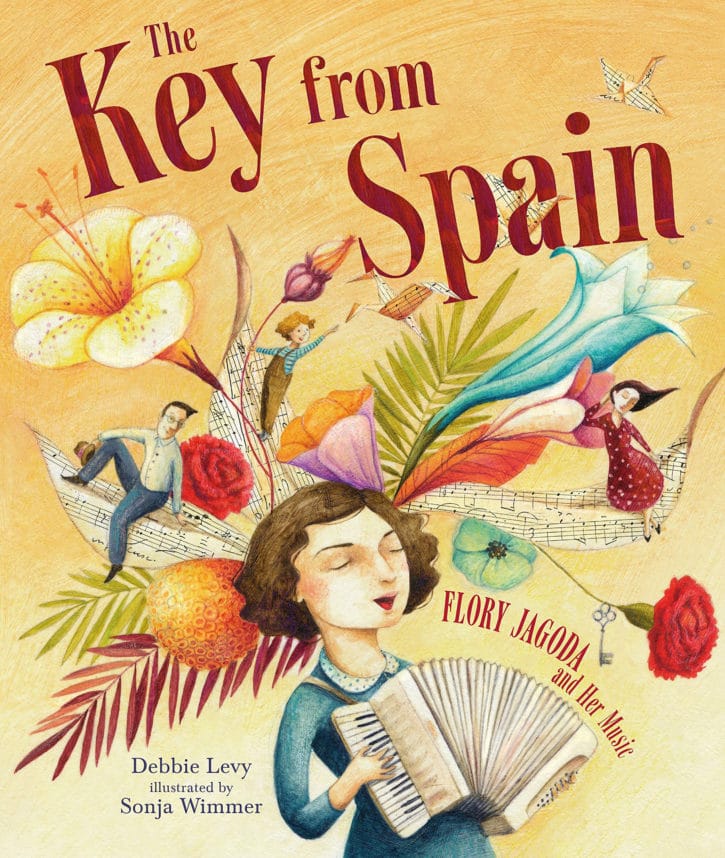 Andy Ryan/Getty Images
Andy Ryan/Getty Images “Mama, what is that thing? The one sitting on the bench?” asked my five-year-old son, pointing to a picture in a children’s book.
“That’s a gefilte ball,” I replied.
“Oh,” he said, looking perplexed. “Can I kick it?”
“It’s not a ball for sports,” I responded. “People eat it.”
“Do you eat it?” he asked.
“No, darling. I would rather eat, well, anything else.”
And that is how I accidentally managed to ruin one aspect of Ashkenazi culture for my children.
In my defense, I, too, had never seen a gefilte fish ball sitting on a park bench. And I certainly wasn’t prepared to be asked if I enjoy its flavor.
It all began last year, one evening at bedtime, when I read to my kids a book from PJ Library called “Five Little Gefiltes.” My children always squeal at the instantly recognizable PJ Library envelope that arrives each month, and this book was a gift from my sister, whose kids were previously signed up for the program, which offers free, Jewish-themed children’s books by mail. “Five Little Gefiltes” is about young gefilte fish who leave the safety of their jar to explore the exciting world of New York City. Naturally, their mother is beside herself with worry. Page after page, as another gefilte disappears, she cries “Oy, vey!” (I also had to explain that phrase to my son by likening it to the Persian version, “Vaveyla!”).
As a mother, I could relate to that panicky fish ball. But that was the only thing to which I could relate in the book.
I was deeply grateful to PJ Library (a program of the Harold Grinspoon Foundation), which provides free, age-appropriate Jewish children’s picture books to 670,000 subscribers spanning five continents. The books are beautiful, vivid and enriching, but I’d started to lose count of how many characters, customs and stories are completely foreign to my own. My children and I love learning about other Jews, but we seldom saw ourselves or our family reflected in those books.
The books are beautiful, vivid and enriching, but I’d started to lose count of how many characters, customs and stories are completely foreign to my own.
I’m Iranian. And for decades, Ashkenazim (whom I love, as I try to love all Jews) have tried to relate to me by comparing gefilte fish and matzo balls to my beloved gondi, an Iranian Jewish Shabbat staple (ground chicken meatballs with chickpea, cardamom, turmeric, and other spices).
Do all Iranian Jews loathe gefilte fish? No. Some even love it. But I wish non-Iranians would stop comparing it (and matzo balls) to gondi.
Of course, not all books that PJ Library offers are about gefilte fish, an outlier if there ever was one. There’s “Goodnight, Bubbala” and others that reference “bubbies” and “zaydes”; many refer to matzo ball soup and distinctly Eastern-European-looking villages; and there are a slew devoted to Ashkenazi holiday customs, especially during Passover, which means more matzo balls (oh, how I wish there was a PJ Library book dedicated to the awesome custom of Iranian Jewish scallion beatings during Persian seders).
Yes, I’m teasing, even if the aforementioned list of themes is correct. And if anyone should know how hard PJ Library is working to expand its Jewish canvas, it’s me.
Last winter, I was a participant in a wonderful pilot cohort and workshop series called “The Stories We Tell: A Picture Book Program for Jewish Storytellers.” The program was sponsored by PJ Library, The Highlights Foundation, and NuRoots, a project of The Jewish Federation of Greater Los Angeles that helps young Jewish adults connect with meaningful Jewish experiences.
“The Stories We Tell” began on Zoom in January 2021 and included ten participants, all of whom are involved in either television, journalism, writing, theatre, illustration, education—and who love to tell stories. Participants were diverse: Sephardi, Mizrahi, Persian, Black, Asian, Latino, part of multi-faith families, and Jews by choice. Some were parents; many were advocates in community networks.
“Representation in media matters,” Meredith Lewis, Director of Content, Education and Family Experience at PJ Library told me. “As PJ Library reviewed its lineups, we realized that many Jewish experiences and perspectives weren’t portrayed at all. ‘The Stories We Tell’ is helping us start the important process of engaging storytellers that could help us bring those missing perspectives of Judaism to life in our books.”
Impassioned Jewish Federation leaders, including Jason Leivenberg (Senior Vice President, NuRoots), Donna Maher (Assistant Director of the Y&S Nazarian Initiative and a fellow Iranian American Jew), and Michael Fritzen, PJ Library Program Manager, are also champions of the extraordinary tapestry of Mizrahi and Sephardic stories.
In full disclosure, I submitted two manuscripts with Mizrahi themes to PJ Library several years ago. Both were rejected.
At the time, I took it personally, worrying whether some at PJ Library headquarters in Western Massachusetts appreciated (or even had knowledge of) Iranian Jews (who number nearly 60,000 in Southern California). But once I began the workshop, I realized that I had no idea how to write a children’s picture book, and that’s probably why my manuscripts weren’t accepted. That humbling realization made all the difference.
According to Leivenberg, PJ Library of Los Angeles sends books to 13,500 local children. With so many Mizrahim and Sephardim in the city, he and his colleagues had heard their fair share of community feedback. “The Federation recognized there was a gap,” he said. “Our community provided feedback that the multitude of Jewish stories in these books was not reflective of the lived experiences, expressions, and backgrounds of the people reading them.”
Bingo. Or should I say, gefilte fish.
“The Stories We Tell” workshop offered an engaging, practical, and often, eye-opening introduction into the world of helping pre-published writers create children’s picture books. Skill-building segments were created and taught by acclaimed author Heidi E.Y. Stemple, who’s written dynamic children’s books including “Jewish Fairy Tale Feasts,” “Eek You Reek,” “Monster Academy,” and, along with her mother, Jane Yolen (author of “The Devil’s Arithmetic”), “A Kite for Moon” and “I Am the Storm.”

Photo credit: Angela DiTerlizzi
And once the workshop ended, it was obvious that most, if not all, of the participants were preparing (or perfecting) manuscripts. “I feel one of my jobs is to make sure that the door isn’t closed after I’m inside,” said Stemple. “Because I’m a published author, it is my job to make sure that that door stays open for others wanting to come in. Mentoring new voices and passing on information about how to succeed once inside—that is one thing I can do to help include more voices.”
Are there still many diverse stories to be told? Yes, but PJ Library is to be commended for its commitment to inclusion and the efforts it’s already undertaking to bridge the gap.
“Often, Jewish books are about the holidays or the Holocaust,” said George Brown, Executive Director of the Highlights Foundation, a Pennsylvania-based non-profit organization that specializes in running workshops and retreats for writers, and whose goal, according to its website, is to amplify “the voices of storytellers who inform, educate, and inspire children to become their best selves.”
Brown added, “Creating stories that haven’t been told yet, or that can be told from a different perspective, or that just show Jewish kids in contemporary life is something all children should have a chance to read. Our goal should be that all children can see themselves in the pages of a book.”
Highlights is currently offering scholarships for Jewish writers and illustrators of color. “The Stories We Tell” workshop will be offered again after the High Holy Days, in Fall/Winter 2021-2022.
“We [PJ Library] definitely have heard from many families asking for greater representation,” said Lewis. To that end, PJ Library has been reviewing all previously used books to ensure they are, according to Lewis, “welcoming, authentic stories.” But including a more diverse array of voices is harder than it seems.
“A large part of the challenge we face is that many of our wonderful current authors cannot tell authentic Sephardic and Mizrahi stories, among other identities that we don’t see represented in our books,” said Lewis. “In order to get those stories, we have to be working with authors that can tell them.”
“A large part of the challenge we face is that many of our wonderful current authors cannot tell authentic Sephardic and Mizrahi stories, among other identities that we don’t see represented in our books,” said Lewis.
One of Lewis’s favorite Sephardic-themed PJ Library books includes “The Peddler and the Baker.” In Fall 2021, PJ Library will release a book set in Morocco called “Eat Coat, Eat,” from a Hebrew version by Ronit Hacham. The story, according to Lewis, is “a beautiful adaptation of the hungry clothes folktale.”
Indeed, PJ Library’s diversity of books is growing. Many are set in ancient Israel or ancient Egypt. Current stories focused on Sephardic and Mizrahi stories and characters include “Yosef’s Dream” and “Yuvi’s Candy Tree” (Ethiopian Jewry); “The Wooden Sword” (set in Afghanistan); Joha Makes a Wish: A Sephardic Tale (featuring a popular character in Sephardic folklore); “Buen Shabbat” (a Sephardic family’s preparation for Shabbat); “One City, Two Brothers” (a Jewish and Arab folk tale); and “The Key from Spain: Flory Jagoda and Her Music” (about the legendary “keep of the flame” of Sephardic music.
“A book about the Ladino (Judeo-Spanish) language would be great,” said Sarah Levin, Executive Director of JIMENA (Jews Indigenous to the Middle East and North Africa), which was founded in 2002 by former Jewish refugees from countries such as Libya.
Yes, through many charming works, PJ Library books have offered a window for my children to learn about the customs of Ashkenazim. But, until recently, they have not offered enough of a window for Ashkenazim to look into the world of my children or other Iranian Jews (or Sephardim or Mizrahim).
“We as Iranian Jews have an incredible 2,700-year history of traditions in Iran that will be permanently lost in the future if writers from our community today do not share our stories and experiences there,” said local journalist, writer and workshop participant Karmel Melamed.
Since completing the workshop, Melamed has drafted manuscripts for two children’s books focused on Iranian Jewish themes, which he recently submitted to PJ Library. “When you lose your roots, how can you grow and flourish in the future?” he asked.
He’s right. And armed with everything I’ve learned from the workshop, I may already have an idea for my next attempt at a PJ Library manuscript: “Five Little Gondi Balls.”
Tabby Refael is a Los Angeles-based writer, speaker and civic action activist. Follow her on Twitter @RefaelTabby.























 More news and opinions than at a Shabbat dinner, right in your inbox.
More news and opinions than at a Shabbat dinner, right in your inbox.